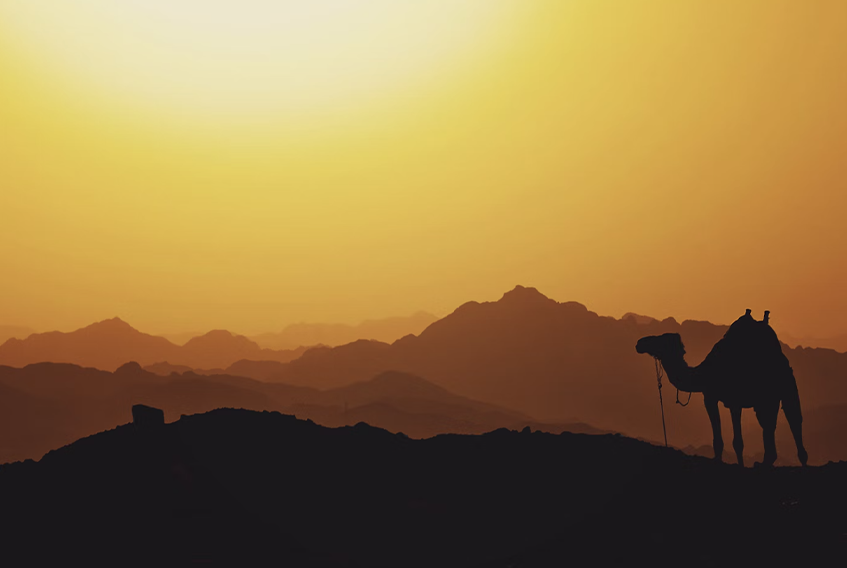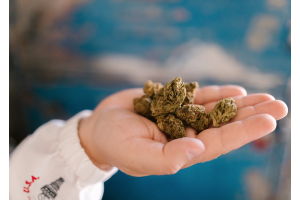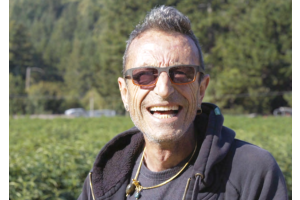A Brief Overview Of Cannabis In The Middle East

Although cannabis is consumed worldwide, few countries have legalized it or discussed its regulation. Most of them are concentrated in North America and Europe. More than 18 states have legalized its recreational use in the United States, while 37 states have legalized it for medical purposes.
Canada legalized recreational cannabis in 2018, while Mexico decriminalized its personal use. In Europe, the legality of cannabis is fragmented and varies from country to country. As of today, no European country has legalized recreational cannabis. Some countries, such as the Netherlands and Spain, adopted different decriminalization and tolerance policies, while almost one-third of European countries have regulated cannabis for medicinal use. The situation drastically changes on other continents, where cannabis is still criminalized, with some exceptions. Among them, it is worth analyzing the legality of cannabis in the Middle East and North Africa (MENA) region for several reasons. Except for a few particular cases, all MENA countries have very restrictive policies on recreational cannabis.
Nevertheless, cannabis and hashish are widely consumed, and countries like Morocco, Egypt, Lebanon, and Afghanistan have long traditions related to hashish. Furthermore, some countries are also big exporters of hashish cannabis to the European continent. What is also interesting is the debate over medical cannabis from the Islamic perspective. However, before delving into these aspects, it would be interesting to learn a bit more about the history of cannabis in the Middle East.
Cannabis has been part of Middle Eastern culture for ages. Persian travelers likely introduced it to the area where modern Iraq is today, around 1200 A.D. In the 12th century, some orders of Sufis, who practiced a more mystical form of Islam, smoked cannabis as part of religious rituals.2Hashish consumption became quite popular in the Arab countries in the 13th century. In the 14th century, hashish became even more prevalent in the region. It spread along the East Coast of Africa and west to North Africa and Spain.
Smoking cannabis became even more popular when tobacco was introduced in the region around the beginning of the 16th century. During that time, hashish was typically consumed orally in a mixture of nuts and honey. As the popularity of hashish increased, its widespread use was perceived as a threat to society by responsible political leaders, who began to issue the first measures to limit hashish consumption. However, this didn't stop people from consuming cannabis and hashish as they became part of the culture in some countries, such as Morocco.Since the 7th century, Islam has been widespread across the region.
Therefore, it is necessary to understand the position of this religion on cannabis. Islam forbids the use of illicit drugs. Therefore, recreational cannabis, other narcotics, and alcohol are religiously prohibited. However, there is an open debate over the use of cannabis for medical purposes. Some scholars note that some Muslims may use narcotic drugs such as opioids (e.g., morphine and tramadol) for anesthesia and pain management. Therefore, cannabis for medical use should be theoretically permitted.
However, there is no doubt that Islam prohibits cannabis for recreational use.All countries in the Middle East and North Africa prohibit the production, trafficking, and consumption of cannabis. But in recent years, some MENA countries have regulated the production of industrial hemp and cannabis for medical purposes.
Lebanon became the first Arab country to legalize cannabis for medical and industrial use in 2020 in an attempt to contribute to overcoming an ongoing economic crisis that erupted in late 2019.3 However, it failed to implement the law due to political instability and the lack of funding to develop a supply chain. Instead, Morocco legalized medical cannabis and industrial hemp in 2021, and it is currently in the process to implement the law.4The analysis of the legality of cannabis in Israel needs to be done separately from other countries in the region because of its particularity.
Cannabis in Israel is allowed for specified medical usage and is partially decriminalized for recreational use. But what makes Israel a particular case is its development in cannabis research, which has been very prolific over the years. Israeli scientists have researched the properties of cannabis for medical applications since the 1960s. They made notable discoveries, such as the isolation of THC from cannabis, conducted by researchers Raphael Mechoulam and Yechiel Gaoni of the Hebrew University of Jerusalem in 1964.Recently, Israel has begun to export cannabis seeds and import large quantities of cannabis for medical use, as well as developing an industry with many startups. But apart from these cases, countries in the MENA region have very restrictive policies on drugs and even on hemp-derived products, such as CBD.
One of the recent episodes that highlighted the restrictive policies on CBD is the case of Billy Hood; a Briton jailed in Dubai in 2021 for possessing CBD vape oil.5Furthermore, the trafficking of illicit cannabis in Iran, Egypt, and Saudi Arabia can even lead to the death penalty. Nevertheless, several MENA countries have become crucial for the production and trafficking of illicit cannabis.The northeast Rif region of Morocco is the top global producer of cannabis resin, with nearly 47,000 hectares under cultivation. This region, alongside Lebanon's Beqaa Valley, is the primary source of cannabis for supplying the MENA illegal market.
The production of cannabis and hashish in these regions is vital for their inhabitants as they often rely only on cannabis farming for their livelihoods.Lebanese and Moroccan drug cartels illegally export cannabis and hashish to Middle Eastern and African countries. Furthermore, Morocco is also one of the first suppliers of cannabis and hashish to Europe. Interestingly, its Rif region also attracts Western tourists who visit cannabis farms to learn more about production and the culture and traditions behind hashish.A special mention of cannabis and hashish production goes to Afghanistan.
Although the Taliban destroyed cannabis crops over the years, Afghani continued to produce hashish and opiates for trafficking to Europe, crossing Iran and Turkey, and entering Europe through the Balkan route
Written and Published by Dario Sabaghi in Weed World Magazine Issue 160
Featured Image: Unsplashed












Validate your login